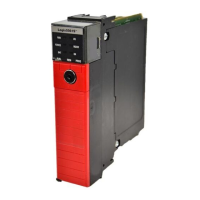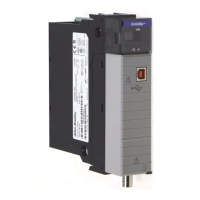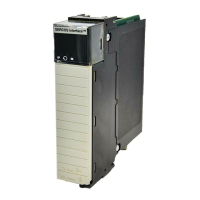146 Rockwell Automation Publication 1756-UM001M-EN-P - February 2012
Chapter 8 I/O Modules
• If you plan to add large amounts of I/O to the ControlNet network,
dedicate one ControlNet network for I/O. For the dedicated ControlNet
network, verify that there is little or none of the following:
– HMI traffic
– MSG traffic
– Programming workstations
• Requested Packet Intervals (RPIs) faster than 25 ms for unscheduled
modules can overload the 1756-CNB or 1756-CNBR communication
module. To avoid the overload, make these considerations:
– Use a NUT of 10 ms or more.
– Keep the SMAX and UMAX values as small as possible.
• If the module has a Real Time Sample (RTS), it should be disabled or set
to a rate that is greater than the RPI.
• You can add I/O modules until you reach these limits:
– 75% of CPU utilization of the 1756-CNB or 1756-CNBR
communication module.
– Plan for a CPU-use increase of 1...4% of the 1756-CNB or 1756-
CNBR module for each I/O module you add, depending on the RPI.
– 48 connections on the 1756-CNB or 1756-CNBR communication
module.
– Less than 400,000 unscheduled bytes per second are displayed in
RSNetWorx for ControlNet software after the network has been
scheduled.
1756-CN2, 1756-CN2R, 1756-CN2RXT Modules
The use of 1756-CN2/B, 1756-CN2R/B, and 1756-CN2RXT modules
provides increased capacity for adding I/O while online compared to 1756-CNB
or 1756-CNBR modules. With this increased capacity, you can easily add I/O
and increase ControlNet connections used with significantly less impact on the
overall system.

